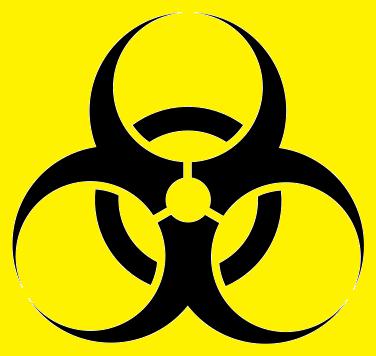By Lone Simonsen and Maarten van Wijhe
Disease X -- a yet unseen deadly infectious disease with an epidemic potential for which no countermeasures exist -- has recently been added to WHO's Blueprint list of priority diseases of concern to public health. While we don’t know what Disease X might be, it reflects the fact that a future pandemic threat may be unexpected. The list contains other dreadful pathogens that were indeed unexpected when they recently emerged, such as Ebola, SARS, and Zika viruses.
Throughout history many different and deadly pandemics have swept across the world. Plague devastated European populations in the middle ages, and smallpox killed small children put fear into people's hearts well into the 20th century until it was eradicated in the 1970s. It still haunts the minds of those dealing with bioterrorism. Cholera epidemics in pre-sanitation 19th century settings in the US and Europe were a driving force for a paradigm shift from the miasma theory of disease to a more modern understanding. Today it is still a big problem in low-income countries struck by natural disasters (like in Haiti since 2010).
One of the devastating pandemics of human history was the 1918 "Spanish Flu." Over 100 years ago, the deadly influenza pandemic killed 1-2% of the world population, mainly young adults, which is not the typical pattern for seasonal influenza (which kills mostly elderly people). It is the poster child of a contemporary severe influenza pandemic and is infamous for temporarily shortening life expectancy by as much as 12 years in many countries.
No dramatic deadly pandemics of its like have happened since, although moderate and mild pandemics of influenza did occur in 1957, 1968, and 2009. Influenza is however but one of many infectious threats. In 2003, SARS emerged unexpectedly in China from contact with civet cats -- and this otherwise unconcerning coronavirus turned into a frightening human pathogen that appeared at first to spread effectively and kill about 10% of those infected, about 1000 deaths in all in Asia and North America mostly. Fortunately SARS did not turn into a full blown pandemic, probably due to intense public health response that included tracking and isolating cases to reduce risk of spread.
Recently, a flurry of vector-borne diseases have emerged or re-emerged and caused large outbreaks. Zika, a mosquito-borne virus, caused large epidemics in South America in 2016. This dengue-like illness led to an associated epidemic of microcephaly due to exposure of pregnant women -- a reminder that death is not the only outcome that defines a severe epidemic disease.
Yellow fever is another of these vector-borne diseases -- an enemy to reckon with as it killed 30% of everyone in Memphis, Tennessee in the 1870s. The concern is whether the current large outbreak of yellow fever in rural Brazil may reach a major urban area and get established in mosquitoes there. Such threats are limited to geographical area where their host mosquito can live; however, with climate change, the geographical risk zone could expand.
Another unexpected newcomer was the HIV/AIDS pandemic in the 1980s, a virus crossing over from non-human primates. Being largely transmitted sexually and in the time span of years, this is very different from influenza pandemics spreading through the air and within days. Despite effective antiviral treatment, HIV/AIDS remain a major public health issue with over 30 million persons living with HIV globally.
Our most recent brush with a novel influenza pandemic virus was in 2009. While all health authorities were on high alert for a severe 1918-like pandemic, it turned out to be unusually mild. After this experience, the WHO revised their approach to pandemic phases to also include a measure of severity and not just base it on evidence of spread across several world regions.
Meanwhile, avian influenza viruses continue to loom as a potent threat in the background, forcing the killing of infected domestic bird populations in order to minimize the spread and risk to humans. Luckily, so far the virus did not have what it takes to effectively spread in human populations and cause a pandemic.
What comes next? What will Disease X be, where will it come from, and how bad will it be?
Given the unknowns and the recent experience with unexpected novel pandemic threats such as SARS, it is fitting that an unknown has been added to the list. A future pandemic could either occur naturally from cross-over of animal viruses, or it could be a bioterrorism event. A recent publication of a “recipe” for how to make a close cousin of the smallpox virus in the laboratory caused a big stir among concerned scientists.
Indeed, the threat of Disease X is all too real.
Lone Simonsen is a professor and Maarten van Wijhe is a post-doctoral researcher at Roskilde University in Denmark. Dr. Simonsen is also affiliated with George Washington University.



